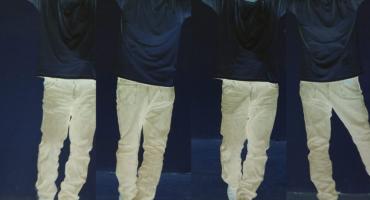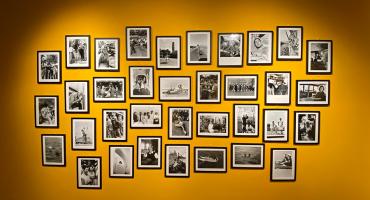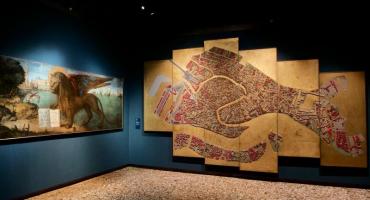VIVA ARTE VIVA
The Exhibition offers a route that unfolds over the course of nine chapters or families of artists, beginning with two introductory realms in the Central Pavilion in the Giardini, followed by seven more realms to be found in the Arsenale and the Giardino delle Vergini. There are 120 invited artists from 51 countries; 103 of these are participating for the first time.
“La Biennale must present itself as a place whose method—and almost raison d’être—is dedicated to an open dialogue between artists, and between artists and the public.”
This is how Paolo Baratta, President of La Biennale di Venezia, presents Biennale Arte 2017, explaining that “the 57th Exhibition introduces a further development. It is as though what has always been our primary work method—encounter and dialogue—has now become the theme of the Exhibition, because this year’s Biennale is dedicated to celebrating, and almost giving thanks for, the very existence of art and artists, whose worlds expand our perspective and the space of our existence.”
“Christine Macel has called it an Exhibition inspired by humanism. This type of humanism is neither focused on an artistic ideal to follow nor is it characterised by the celebration of mankind as beings who can dominate their surroundings. If anything, this humanism, through art, celebrates mankind’s ability to avoid being dominated by the powers governing world affairs. These powers, if left to their own devices, can greatly affect the human dimension, in a detrimental sense. In this type of humanism, the artistic act is contemporaneously an act of resistance, of liberation and of generosity. Today, in a world full of conflicts and shocks, art bears witness to the most precious part of what makes us human. Art is the ultimate ground for reflection, individual expression, freedom, and for fundamental questions. Art is the last bastion, a garden to cultivate above and beyond trends and personal interests. It stands as an unequivocal alternative to individualism and indifference. The role, the voice and the responsibility of the artist are more crucial than ever before within the framework of contemporary debates. It is in and through these individual initiatives that the world of tomorrow takes shape, which though surely uncertain, is often best intuited by artists than others.”
“Viva Arte Viva is an exclamation, a passionate outcry for art and the state of the artist. Viva Arte Viva is a Biennale designed with artists, by artists and for artists.”
The nine trans-pavilion
Each of the nine chapters or families of artists of the Exhibition “represents a Pavilion in itself, or rather a Trans-Pavilion as it is trans-national by nature but echoesthe Biennale’s historical organisation into pavilions, the number of which has never ceased to grow since the end of the 1990s.”
“From the “Pavilion of Artists and Books” to the “Pavilion of Time and Infinity”, these nine episodes tell a story that is often discursive and at times paradoxical, with detours that mirror the world’s complexities, a multiplicity of approaches and a wide variety of practices. The Exhibition is intended as an experience, an extrovert movement from the self to the other, towards a common space beyond the defined dimensions, and onwards to the idea of a potential neo-humanism.”
“Viva Arte Viva also seeks to convey a positive and prospective energy, which whilst focusing on young artists, rediscovers those passed away too soon or those who are still largely unknown despite the importance of their work.”
“Starting with the Pavilion of Artists and Books, the Exhibition reveals its premise, a dialectic that involves the whole of contemporary society, beyond the artist himself, and addresses the organisation of society and its values.”
“Art and artists are at the heart of the Exhibition, which begins by examining their practices, the way they create art, halfway between idleness and action, otium and negotium.”
Some texts and images are sometimes found on the web, citing if possible their source and author and are disclosed for information purposes only, in accordance with paragraph 1-bis of Article 70 of Law n. 633 of April 22, 1941, "Protection of copyright and other rights related to its exercise".
The material taken from the web was in good faith considered public domain. If their publication infringes any copyright, please inform us to remove or modify them.
The authors of the blog are not responsible for the linked sites or their content, which may be subject to changes over time.
The remaining material is property of the authors of the site, which is subject to copyright. No reproduction, not even partial (in print or digital), is permitted without the express permission of the authors.
The texts on the site are freely usable for cultural and not profit purposes, provided that they clearly state the source of origin, any authors of the text, when indicated, the dates of editing and updating and the relative url.



